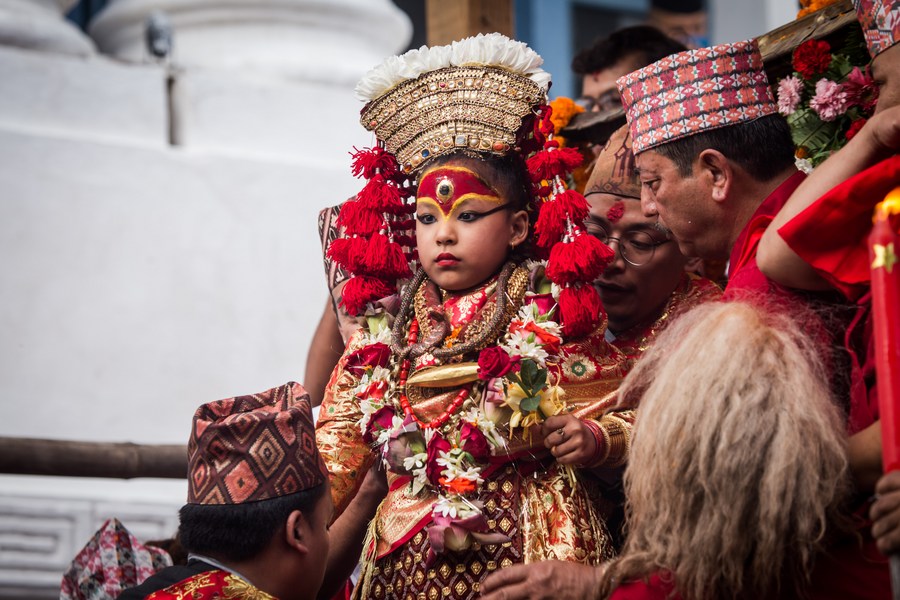Nepalese festivals are renowned for offering thrilling, vibrant, and exciting experiences. Many celebrations occur every year in accordance with the time and season. Seeing how different yet similar each event is is really amazing. These celebrations, sometimes referred to as "Jatra", are frequently marked by sumptuous feasts, lively spectators, and music. Festivals, however, are more than just feasts and revelry.
These celebrations have strengthened and solidified the links that unite people in a community and the country. The majority of these festivals have a history dating back more than a thousand years, and they continue to carry a religious and cultural significance till today. People still rigorously adhere to the rites as they have been passed down through generations, even though the genesis myth for these celebrations can have numerous interpretations, making their exact origin unclear.

Ghode Jatra- The Festival of Horses
In accordance with the Hindu calendar, Ghode Jatra is observed on Krishna Aunshi Tithi, which falls on the dark lunar fortnight (lunar calendar). The enthusiasm surrounding the Ghode Jatra is heightened by the fact that Newars of Kathmandu also celebrate Pahachare on the same day to usher in the new year.
In the presence of the nation's leader, a competitive horse racing event is held on that day at the primary training facility (Tundikhel) of the Nepali army. On why it is commemorated, there is no concrete answer. However, according to the myth, a demon named Tundi is said to have feasted on travellers to Tundikhel when it used to live there. People in Kathmandu bravely engaged it in combat, killed it, and then rode horses over its body in celebration.

Indra Jatra- The Festival of Lord Indra
Mythologically speaking, it all began when Bashundhara sought the rare, earth-only jasmine blossom for rituals. Being a good son, Lord Indra came to Earth in the guise of a farmer to look for the flower. He was caught by the locals when he was picking the flower, and they accused him of theft. For eight days, he was chained to a pole and taken across Kathmandu. He was unable to free himself or convince them of his story.
Basundhara, his mother, and other gods and goddesses descended to the Earth to search for him out of worry due to his disappearance. They eventually located him. Following a bargain, his mother promised to give enough rainfall to Kathmandu to produce wholesome crops. Lord Indra was released from the chains and with his mother went back to heaven. Since then, he has come to be known as the rain god. The eight-day celebration of his capture is known as Indra Jatra.

Gai Jatra- The Festival of Cows
In Newari, Gaijatra is also referred to as Saa Paru. Its literal translation is "Cow Festival," and it refers to a festival of singing, dancing, humour, and fun. The Newars of Kathmandu celebrate it to remember loved ones who have passed away.
Families, who have lost a family member or relative within the past year, take part in a procession through Kathmandu's streets while pulling a cow during this celebration. The association with cows supports the name Gai Jatra. According to the lunar calendar of Nepal, it is observed on Bhadra Shukla Chaturdashi (the day before the full moon). According to legend, King Pratap Malla instituted this celebration as a means of easing his wife's grief following the passing of their son Chakrabartendra.

Rato Machhindranath Jatra- The Festival of Rato Machhindranath
The Rato Machhindranath Jatra dates back to King Narendra Dev's era. The explanation behind it has to do with an unfulfilled desire for recognition. No one recognized Guru Gorakh when he arrived in Patan after receiving an education from his instructor Machhindranath in India. He travelled to Kathmandu and began practising meditation after capturing the serpents including a snake that causes rain, because he was furious about the inhabitants’ indifference.
It brought about a drought in Patan. As a result, King Narendra Dev invited Machhindranath at the advice of his counsellors. Guru Gorkha released serpents and it started to rain as soon as he realised his teacher had been there. Rato Machhindranath Jatra is therefore celebrated in Nepal.

Bhoto Jatra- The Festival of Vest
Bhoto Jatra follows Rato Machhindranath Jatra, a procession that lasts for a full month. Bhoto Jatra's tale of origin is an intriguing one. When the queen of the Serpent God, who resided in Taudaha Lake, became ill, the anxious king sought assistance from a Jyapu, a Newar farmer, who nursed her back to health by using various herbs. Happy, the King Serpent gave a Bhoto (a sleeveless shirt) adorned with decorations. One of the government representatives shows off this holy vest in Bhoto Jatra in Jawalakhel every year in front of the living goddess Kumari and the head of state.
Photo Credits: www.thenepalweekly.com, www.tibettravel.org, www.aboutnepaltreks.com, www.ntb.gov.np, www.omgnepal.com,www.kathmanduecohotel.com, www.english.news.cn
Also Read: